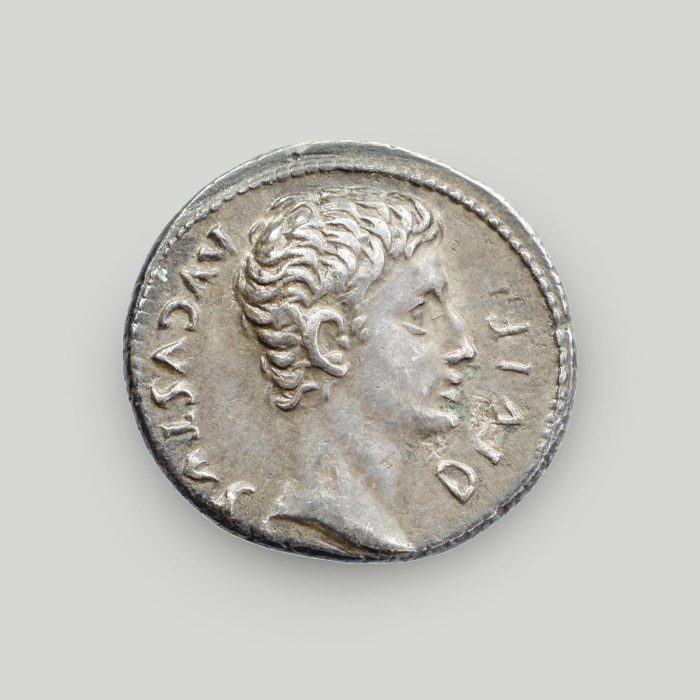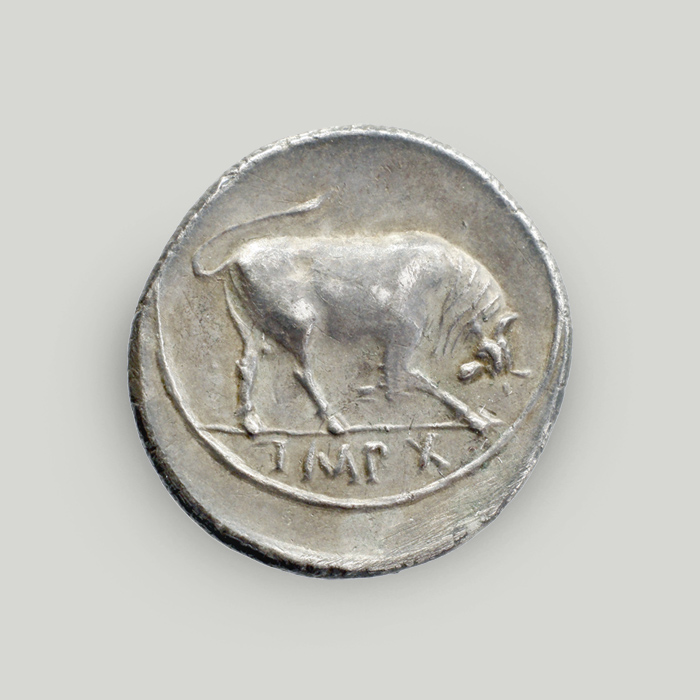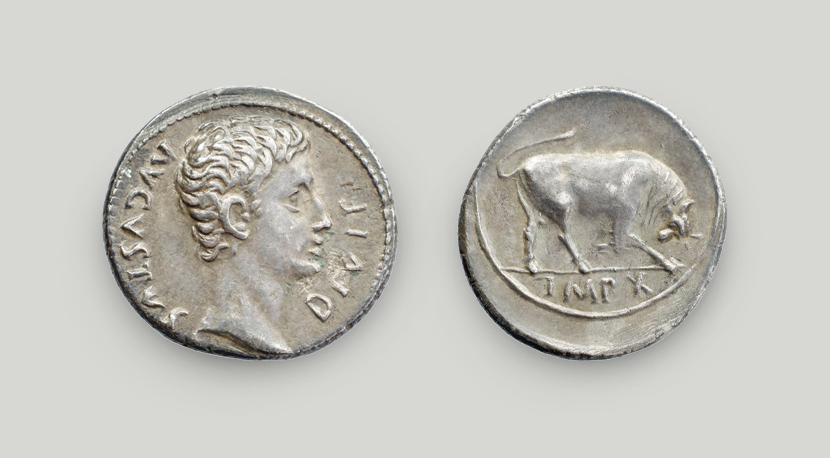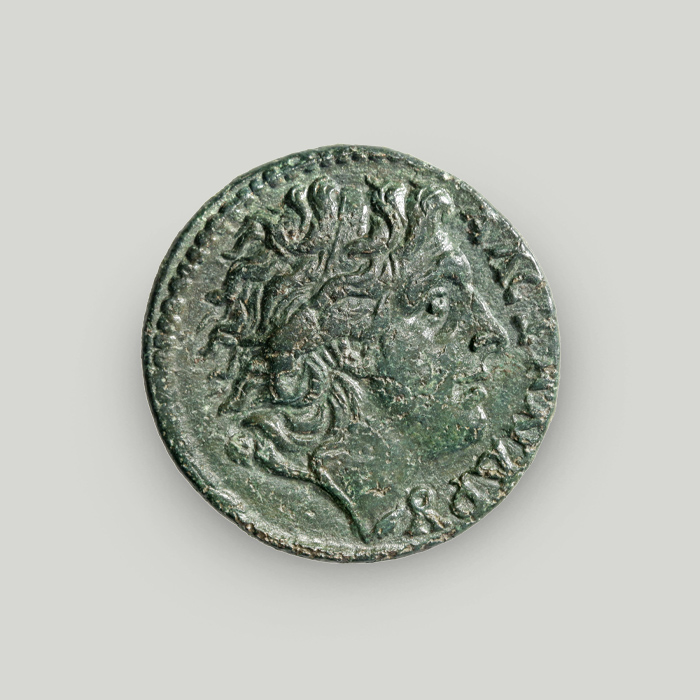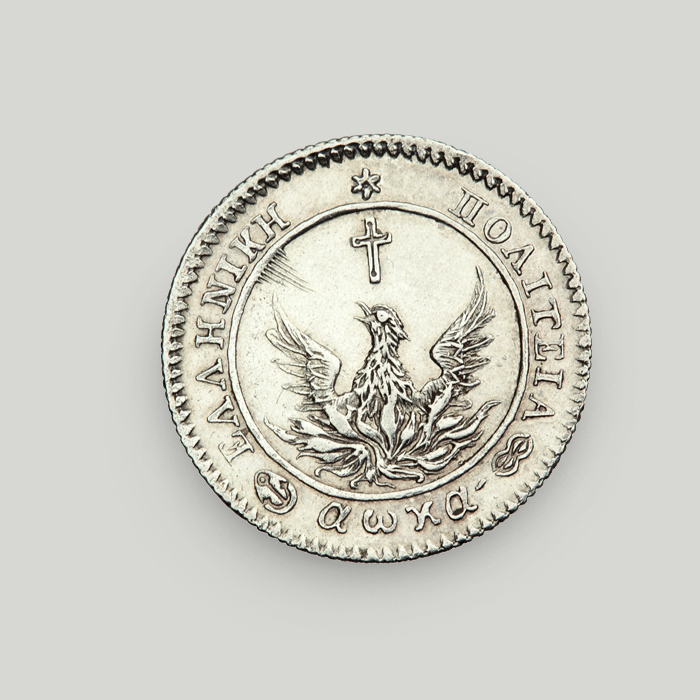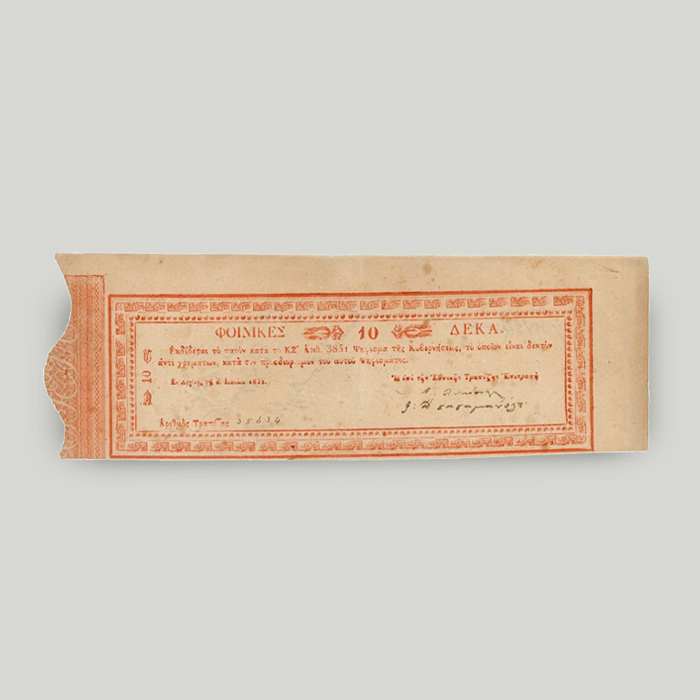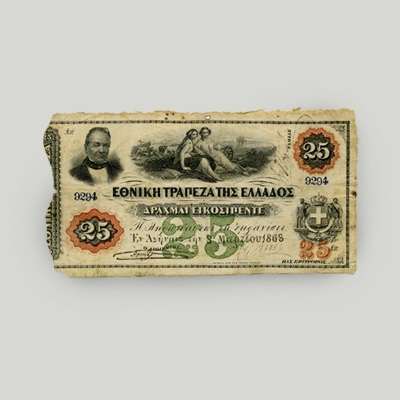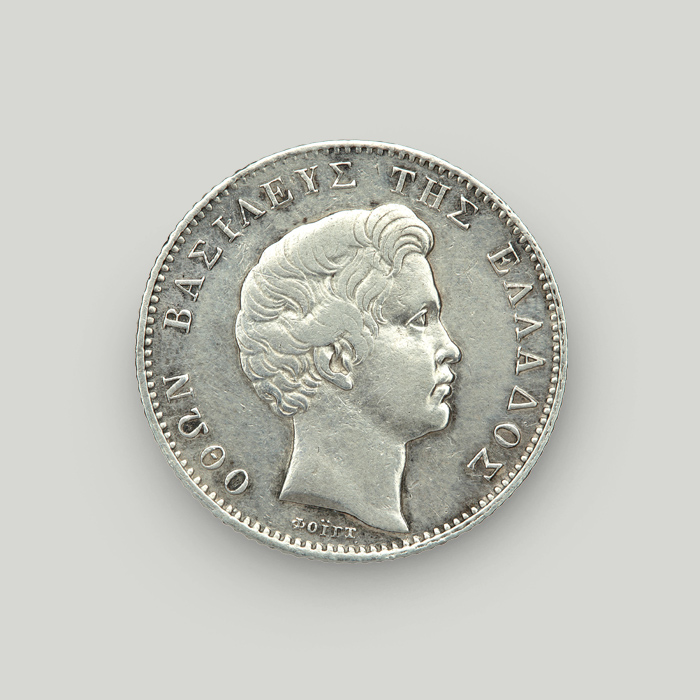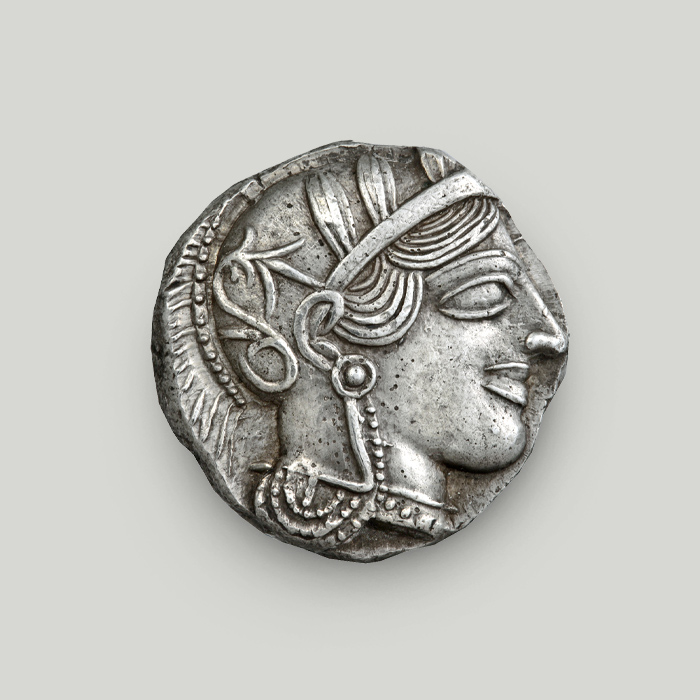Silver denarius of Augustus
Caesar Augustus, also known as Octavian, was the first Roman emperor. His reign marked a new era in the history of monetary transactions. Rome, the new power, imposed the use of its currency on the conquered territories. This is how the denarius came to be the main currency of the Roman era.
Obverse
Head of Augustus within a circular dotted border. The legend around the head reads AVGVSTVS DIVI F[ILIUS], which is Latin for “Augustus, the son of god”.
Reverse
Bull charging to the right, his head lowered, within a circular dotted border. The legend reads “IMP X”. These letters are an abbreviation of the word IMPERATOR (emperor) and the coin’s year of issue (X for 10).
The rise of Rome and the denarius
Rome rose as a new power in the early 3rd century BCE. Previously a small city-state in the region of Latium, Rome managed to unite Italy under its leadership and, gradually, prevail in the Mediterranean.
As a conqueror, Rome imposed the use of the denarius. The new silver coin was issued according to the Greek weight standards.
The first series issued depicted mythical scenes and deities.
Coinage under Augustus
The rise of Augustus to power marked a new era in the history of monetary transactions. Rome, as the new power, imposed the use of its currency, the denarius, on the conquered territories.
Ever since, the obverse of the denarius depicted the likeness and titles of the emperor at the time. The reverse usually depicted the emperor’s feats, travels and virtues.
Roman currency
The denarius became the standard of the Roman monetary system for 5 centuries.
Its main fraction was called sestertius (1 denarius = 4 sestertii), initially minted in silver, then in bronze. There were, of course, other denominations.
The denarius today
In modern Romance languages, the words for “money” are etymologically connected to the denarius, e.g. denaro in Italian, dinheiro in Portuguese etc.
The modern dinar is also the currency of many countries, such as Serbia, North Macedonia and some countries in the Arab world.
The many names of Augustus
Caesar Augustus (63 BCE-14 CE) was a Roman military and political leader, and founder of the Roman Principate (later Roman Empire). In 27 BCE he became the first Roman emperor.
He was born Gaius Octavius Thurinus. Julius Caesar, who was a cousin of his father’s, adopted him and made him his heir; as was customary at the time, he also gave him his surname (Julius Caesar). However, they also shared the same first name (Gaius), so the younger of the two was typically called Octavian (little Octavius) to avoid confusion.
Octavian’s legacy
Following the assassination of Julius Caesar in 44 BCE and by taking decisive military and political action, Octavian managed to restore the image of the Roman Republic to the world.
During his reign:
- The Empire extended from Britain to Syria and the northern coast of Africa.
- There was a relatively peaceful period known as the Pax Romana (Roman Peace).
- Rome was organised again from the ground up, with many new structures built, and a management system that significantly increased state revenue.
The months July and August
The Senate bestowed upon Octavian the title “Augustus”, which is Latin for “venerable”. The names “Caesar” and “Augustus” were adopted by all emperors after Caesar and Octavianus.
Octavian officially renamed the Roman calendar months Quintilis and Sextilis to “Julius” and “Augustus” in honour of his adoptive father and himself.
Following his death in 14 CE, the senate declared him a god and established he should be worshipped by the Roman people.
The Alpha Bank Numismatic Collection is not open to the public.
Research visits to the Numismatic Collection can be organised upon request.
Contact us to book your visit.
